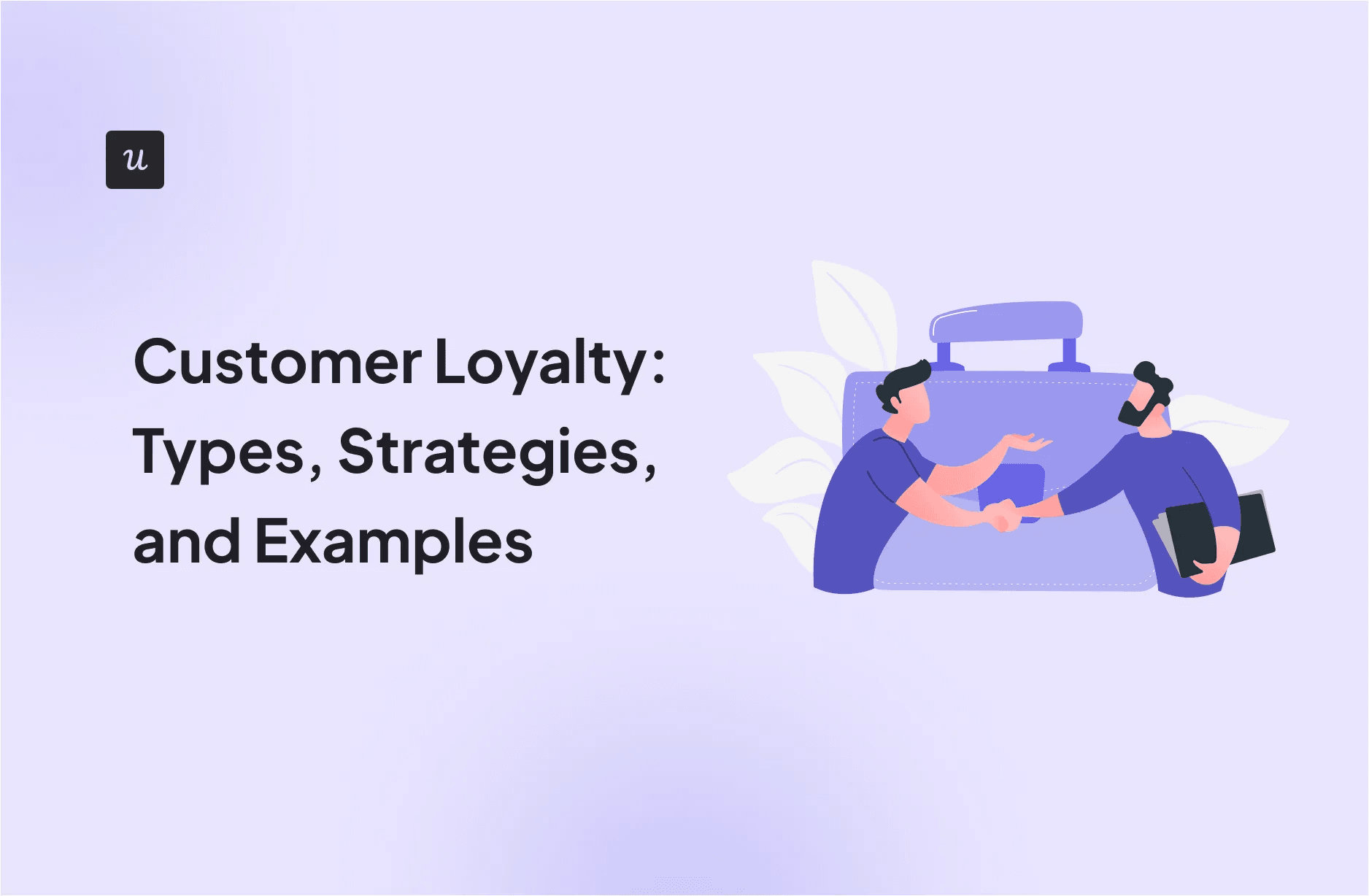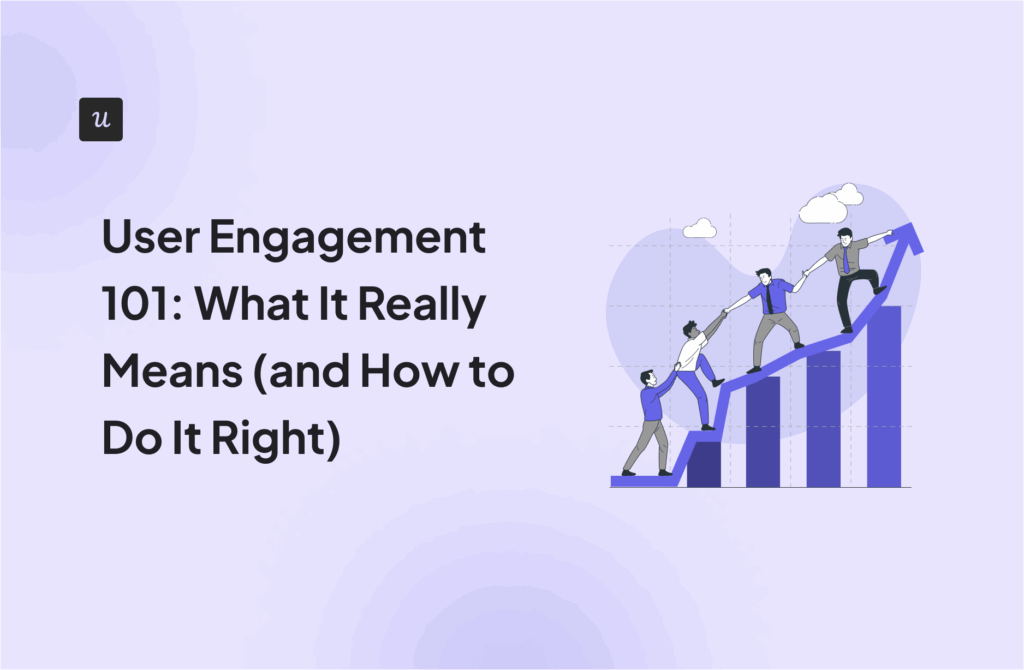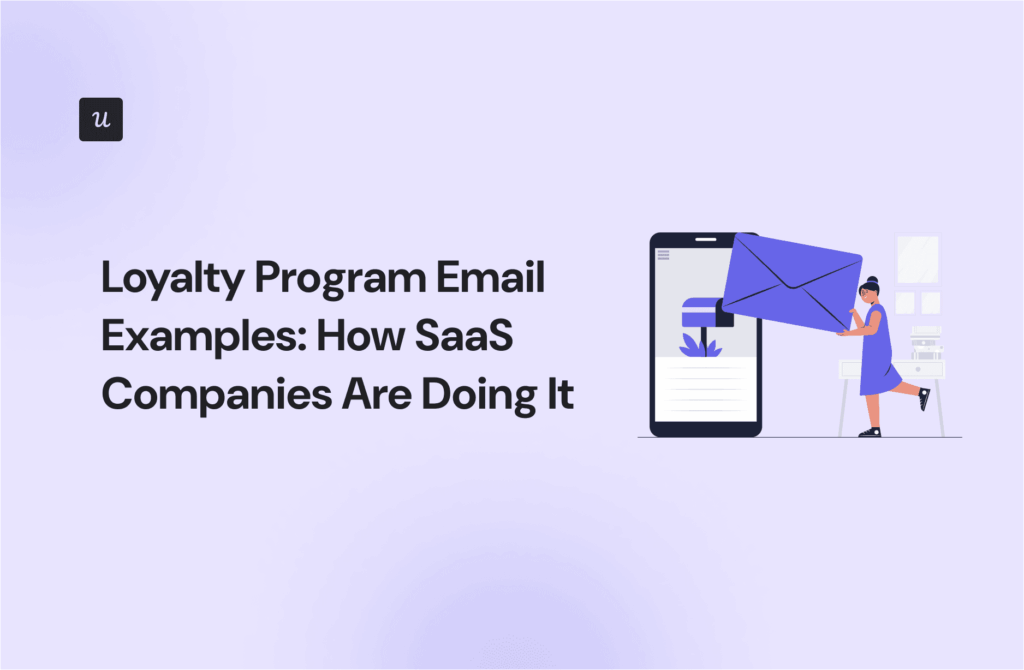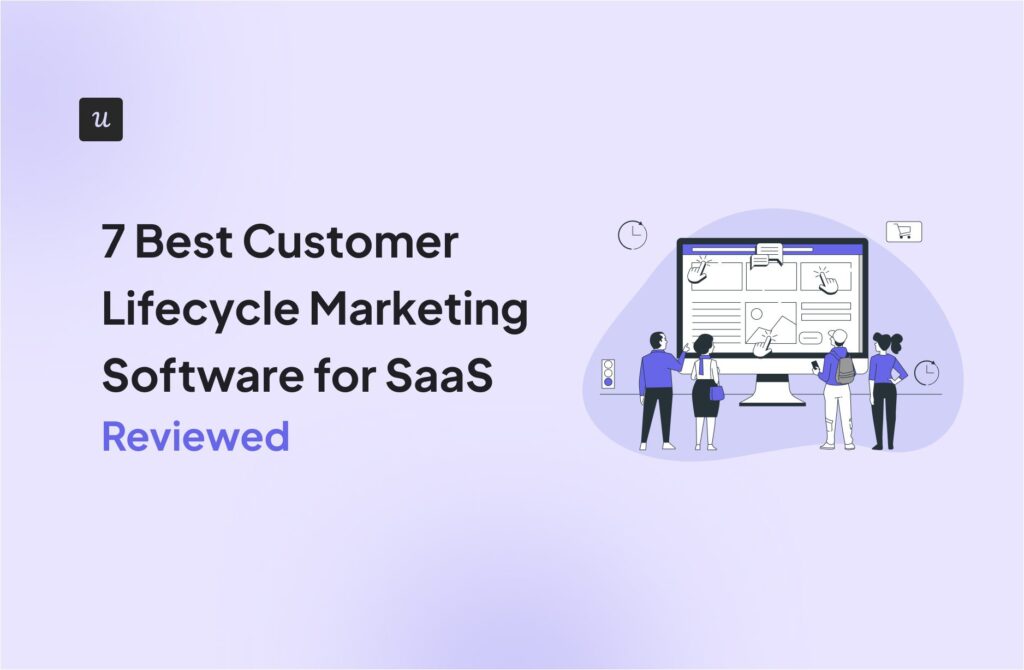
According to research by Deloitte, 70% of customers spend more regularly with brands whose loyalty programs they're a part of. Couple this with the fact that the average cost of customer acquisition continues increasing, and you begin to appreciate the importance of customer loyalty.
Not only does cultivating customer loyalty drive customer retention, but it also helps with sustainable financial success since loyal customers bring repeat business with more frequent purchases.
These are just some of the benefits you can reap by focusing on customer loyalty. But to reach this point, there's a lot left to explore first. This article will help, covering key aspects like:
- What is customer loyalty?
- Why is customer loyalty important?
- Types of customer loyalty programs.
- Ways to measure customer loyalty.
Try Userpilot Now
See Why 1,000+ Teams Choose Userpilot

What is customer loyalty?
Customer loyalty is the emotional connection existing customers have with your brand, which leads them to repeatedly engage with and purchase from you over other competitors.
Such loyalty generally results from positive customer experiences, like great customer service or personalized interactions, that build customer trust.
Why does customer loyalty matter?
Earning and retaining avid fans isn't easy, but if done right, the advantages are endless. For instance, here are just some of the reasons why building a loyal customer base is important:
- Cost-effectiveness: Customer retention of existing customers is significantly cheaper than acquiring new ones. Specifically for SaaS, experts suggest it costs four to five times more to attract new customers than to keep existing ones.
- Increased revenue growth: Loyal customers tend to spend more over time. In fact, studies show that increasing customer retention rates by just 5% can lead to a profit increase of 25% to 95%.
- Reduced churn: Once a customer decides to leave, the likelihood of them returning is incredibly low. However, fostering customer loyalty can help with that by significantly decreasing churn rates.
- Greater brand advocacy: Loyal customers provide positive (and helpful) customer feedback and advocate for your business, recommending it to others. Such word-of-mouth marketing and referrals can generate up to 50% of all purchasing decisions.
The first step to unlocking these benefits is to drive customer loyalty by implementing loyalty programs and similar tactics. However, it should be noted that the effectiveness of these programs depends on your business model (B2B, B2C, etc.) and industry (e.g. tech or healthcare).
To help you tailor your approach to your business context, we explore the various types of customer loyalty programs in later parts. We'll also cover ways to validate the impact of your customer loyalty efforts, so you're all primed for greater success.
Types of loyal customers
Even within loyal customers, different segments exist based on their varying reasons for returning to your brand. Knowing the nuanced differences between these segments is useful when designing a loyalty program for each type.
- Satisfied customers: Enjoy and find consistent value in using your products or services, and have purchased or renewed subscriptions multiple times. However, they can be easily swayed by competitors offering similar capabilities or experiences.
- Convenience loyals: Stay loyal due to the ease of communication and accessibility your brand offers, valuing convenience over price. Unlikely to switch because that would disrupt said convenience.
- Loyalty-program loyals: They're not loyal to your company or product, but rather to your customer loyalty program, primarily motivated by the variable rewards it offers.
- Low-price loyals: Only loyal to low prices and will quickly switch if competitors offer better deals. You can always win them back by offering lower prices. However, this makes long-term retention of such customers incredibly costly.
- Truly loyal customers: Repeat customers with greater customer lifetime value, consistently purchasing from you, and acting as brand advocates, referring your company to friends and family.
Types of loyalty programs
Unfortunately, there is no one-size-fits-all loyalty program that can drive customer retention across all loyalty segments. Instead, you need to pick the appropriate program type that fits your industry and business needs.
Here's an overview of all the types of loyalty programs you can consider to help build customer loyalty:
- Points programs.
- Tiered loyalty/subscription programs.
- Refer-a-friend programs.
- Spend-based programs.
- Mission-driven programs.
Points programs
Points programs are a popular way to engage customers by rewarding them for specific actions, such as making purchases or providing feedback.
As the name suggests, customers earn points for these actions, which they can later redeem for various benefits, like discounts on future purchases.
You can keep track of reward points through loyalty cards, online accounts, or mobile apps, making it easy for customers to see their progress, too.
Plus, because point programs are so commonly used, most customers are already familiar with them and, therefore, more likely to participate.
A great example is HubSpot's Partner Program, which rewards agencies and consultants with points for activities that benefit Hubspot, like client onboarding and successful implementations.
Tiered loyalty or subscription programs
Tier-based programs reward customers according to their spending levels, creating a system where increased investment in your business unlocks greater benefits. To unlock the next tier, customers must spend a certain amount of money within a set timeframe.
This tiered design effectively motivates customers on lower tiers to rise up the ranks in search of more exclusive rewards. Many B2B SaaS companies do this by integrating loyalty elements, like access to extra features or priority support, into their subscription models.
However, tiered programs are far more common in B2C businesses.
For instance, consider Ulta's Ultamate rewards program, which requires customers to spend $500 and $1,200 annually to reach Platinum and Diamond status, respectively. Customers on higher tiers can earn points at a faster rate and exchange them for tangible gifts or limited-edition items.
Refer-a-friend programs
Refer-a-friend programs employ word-of-mouth marketing tactics to incentivize customers to act as advocates, recommending your brand to friends and family.
In exchange for successful referrals, typically via referral links or discount codes, participating customers get rewards such as gift cards, cashable points, branded swag, etc. Such loyalty programs can also lower customer acquisition costs since they utilize existing customer relationships.
Dropbox's referral program is a successful example, where both the referrer and the referred user receive extra storage space.
Spend-based programs
Spend-based rewards programs are solely designed to recognize and acknowledge the value of high-spending customers.
They follow a simple principle: the more a customer spends, the greater rewards they receive. This approach enhances engagement with your most valuable customers.
Spend-based programs are quite common in B2B companies that deal with enterprise-level clients. Zoom, for example, offers volume discounts for large enterprises that require many licenses.
Mission-driven programs
A loyalty program doesn't always have to rely on giving customers discounts or material rewards. Oftentimes, intrinsic satisfaction does the trick just as well. This means implementing a cause-based program where you offer customers the chance to direct a portion of their purchases, like 5%, to a charity of their choice.
If you're a mission-driven company that believes in upholding certain values across all business proceedings, then this loyalty program type is right for you. You can even partner with a nonprofit that aligns with your brand’s mission further to enhance the impact and appeal of this approach.
For example, while not strictly SaaS, Patagonia's "1% for the Planet" initiative is a mission-driven program, where they donate 1% of sales to environmental nonprofits.
How to measure your customer loyalty program value
The fact that customer loyalty is partly influenced by the emotional connection customers feel with your brand makes it tricky to measure. However, certain performance indicators do exist to track loyalty behaviors and measure the success of your loyalty program accordingly.
Which of these methods you use will depend on your goals, industry, and the type of loyalty program you implement. To help you decide, let's go over all the methods and metrics you should consider:
- Net Promoter Score (NPS): Measures loyalty by asking how likely customers are to recommend your product or service, with scores categorized into promoters, passives, and detractors.
- Customer satisfaction score (CSAT): Assesses customer satisfaction through surveys that ask customers to rate their satisfaction with your product or service, typically on a scale. To easily create satisfaction surveys and measure customer loyalty metrics like CSAT and NPS, consider tools like Userpilot.
- Customer lifetime value (CLV): Estimates the total revenue you can expect from a single customer throughout their relationship with your business.
- Average revenue per user (ARPU): Calculates the average revenue generated per user or account within a specific time frame, often used in subscription-based businesses to gauge financial performance.
- Account expansion: Refers to strategies aimed at increasing revenue from existing customers through upselling, cross-selling, or expanding product usage, contributing to overall business growth.
It should be noted that tracking these metrics on their own is not enough. To understand how your program is performing, you also need a base to compare your results against. Here are three ways you can do that:
- Use external data, like industry benchmarks.
- Monitor loyalty metrics over time to study any positive or negative changes.
- Track customers not enrolled in your loyalty program, comparing their behaviors and metrics against those of loyal customers.
Other factors that contribute to improving customer loyalty
Implementing a customer loyalty program doesn't guarantee an uptick in loyalty. Instead, there are many other aspects you need to refine as well, starting with customer retention best practices, like the ones below.
Unparallel account management
While focusing on improving overall customer satisfaction, most businesses overlook what comes after sign-up, forsaking their users' ongoing onboarding needs. Instead, retaining B2B clients requires better account management practices, starting with assigning each account manager fewer partnerships.
This way, they'll have more bandwidth to provide exceptional experiences, by prioritizing proactive support, regular communication, collecting customer feedback, and providing tailored assistance.
To underscore the importance of proper account management, consider Semrush's example.
Their LinkedIn post about their recent acquisition of Search Engine Land became flooded by comments from old customers writing reasons for why they left Semrush. A common theme emerged: many cited inadequate dedicated support and account management as reasons for leaving.
Personalized experiences
Imagine if Amazon showed you a recommendation for a new gardening tool, even though you’ve never searched for gardening supplies and have no interest in gardening. You'd likely scroll past it without a second thought.
What if, instead, Amazon highlighted a sleek new pair of headphones based on your recent searches for tech gadgets? Now that’s a recommendation you’d click on.
Just like you, most customers are more receptive to relevant promotions instead of being shown something generic. In fact, customers are now more willing to share their information in exchange for personalized experiences. Here's an overview of the data customers are comfortable sharing:
- Email address – 86%
- Customer interests (relevant to the brand) – 78%
- Customer name – 77%
- Browsing data on the brand's website or app – 66%
- Customer demographics – 62%
By collecting and leveraging such customer data captured through your loyalty program, you can improve your recommendations and upsell or cross-sell more relevant products, too.
Tools like Userpilot can also help improve personalization. For instance, you can customize in-app communication and guidance with tailored messages, surveys, walkthroughs, and onboarding checklists.

Churn survey analytics
An easy way to drive retention and, ultimately, loyalty is to figure out why customers are leaving in the first place and solve the problem. In other words – it's time for churn analytics.
Start by triggering churn surveys, including them in your cancellation flow so they appear whenever customers try canceling their subscriptions. In your survey, make sure to include a list of possible churn reasons along with an open-ended question to uncover issues you might be missing out on.

Conclusion
Throughout this article, you've seen that many factors feed into customer loyalty. But at the root of it all lies trust. So, no matter what customer loyalty strategy you come up with, always prioritize understanding your customers and building genuine connections with them to earn their trust.
How you go about implementing this practically will depend on your industry and business model. It could look like anything from regularly seeking feedback to investing in customer support tools that help refine the customer experience.
Speaking of customer experience – looking to build personalized in-app experiences to retain and nurture loyal customers? Get a Userpilot Demo and see how you can turn new customers into satisfied brand advocates.
Customer loyalty FAQs
Lastly, let's explore some additional key concepts that can help you retain customers for longer.
What are the 4 C's of customer loyalty?
The 4 C's represent four categories of customer loyalty:
- Captive: Customers that are stuck with your brand merely due to a lack of alternatives.
- Contented: Satisfied customers who appreciate your brand but may not be actively engaged.
- Convenience-seeker: These customers prioritize ease and efficiency.
- Committed: Highly loyal customers who actively advocate for your brand.
What are the three R's of customer loyalty?
Use these three R's to help build customer loyalty:
- Reward: Offer tangible hard benefits for favorable customer behavior to acknowledge their value, like discounts or redeemable loyalty points.
- Recognition: Show appreciation through gestures like complimentary upgrades or exclusive access, delivering soft benefits that improve customer relationships.
- Relevance: Connect with customers to foster deeper engagement, taking the time to understand their needs and gather customer feedback.
How does customer loyalty benefit customers?
While customer loyalty helps businesses drive lifetime value and customer retention in the long run, it also benefits customers in several ways. For instance, it provides customers with rewards, personalized experiences, exclusive offers, and better customer support, enhancing their overall satisfaction.











